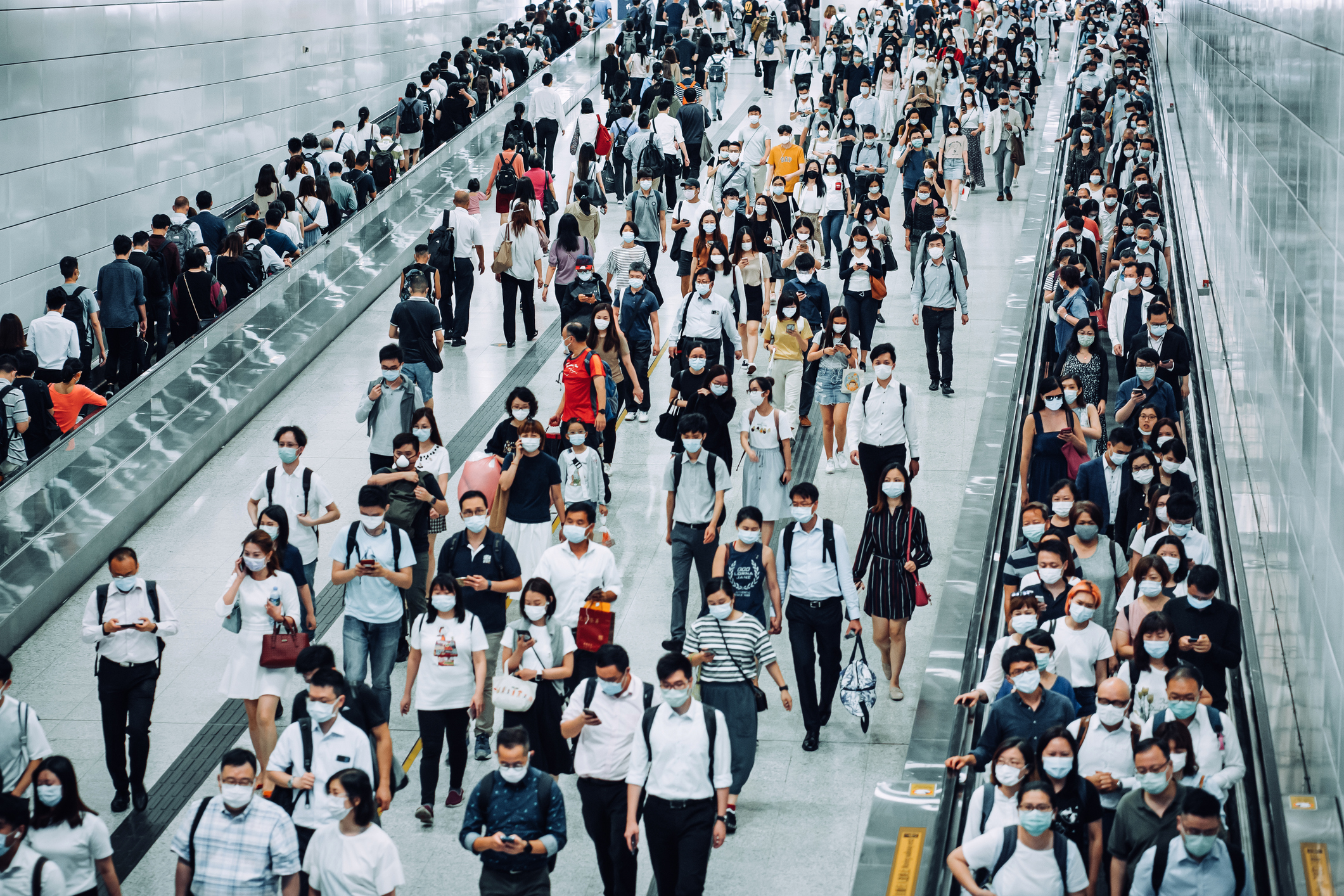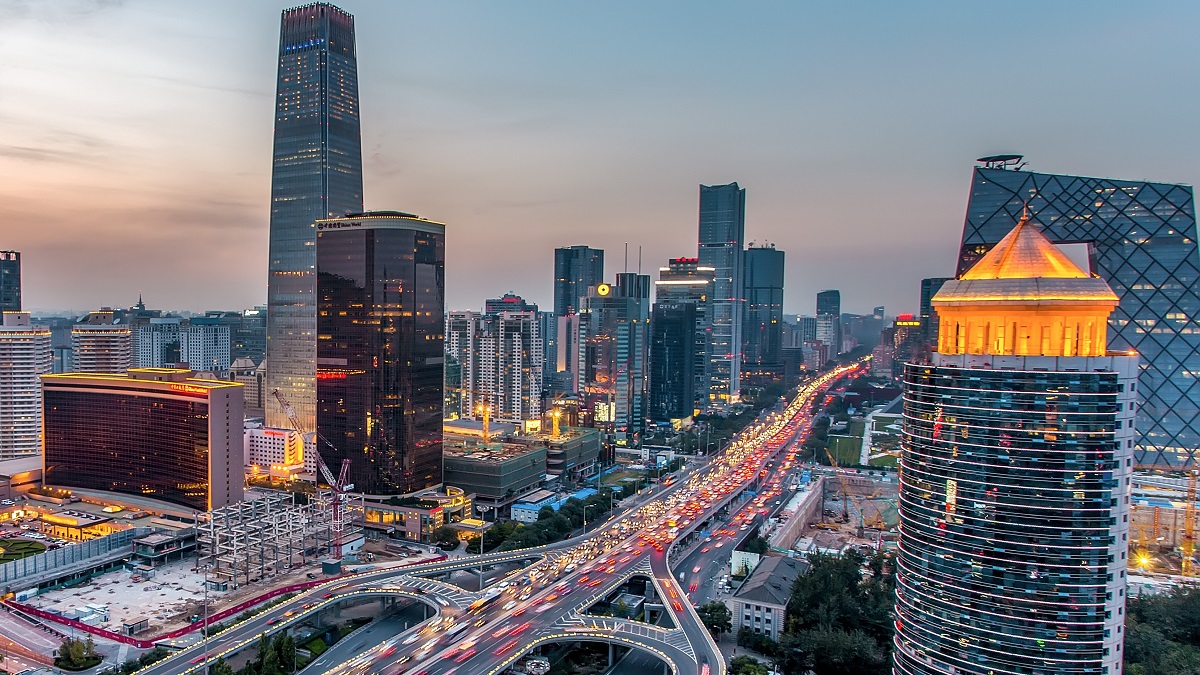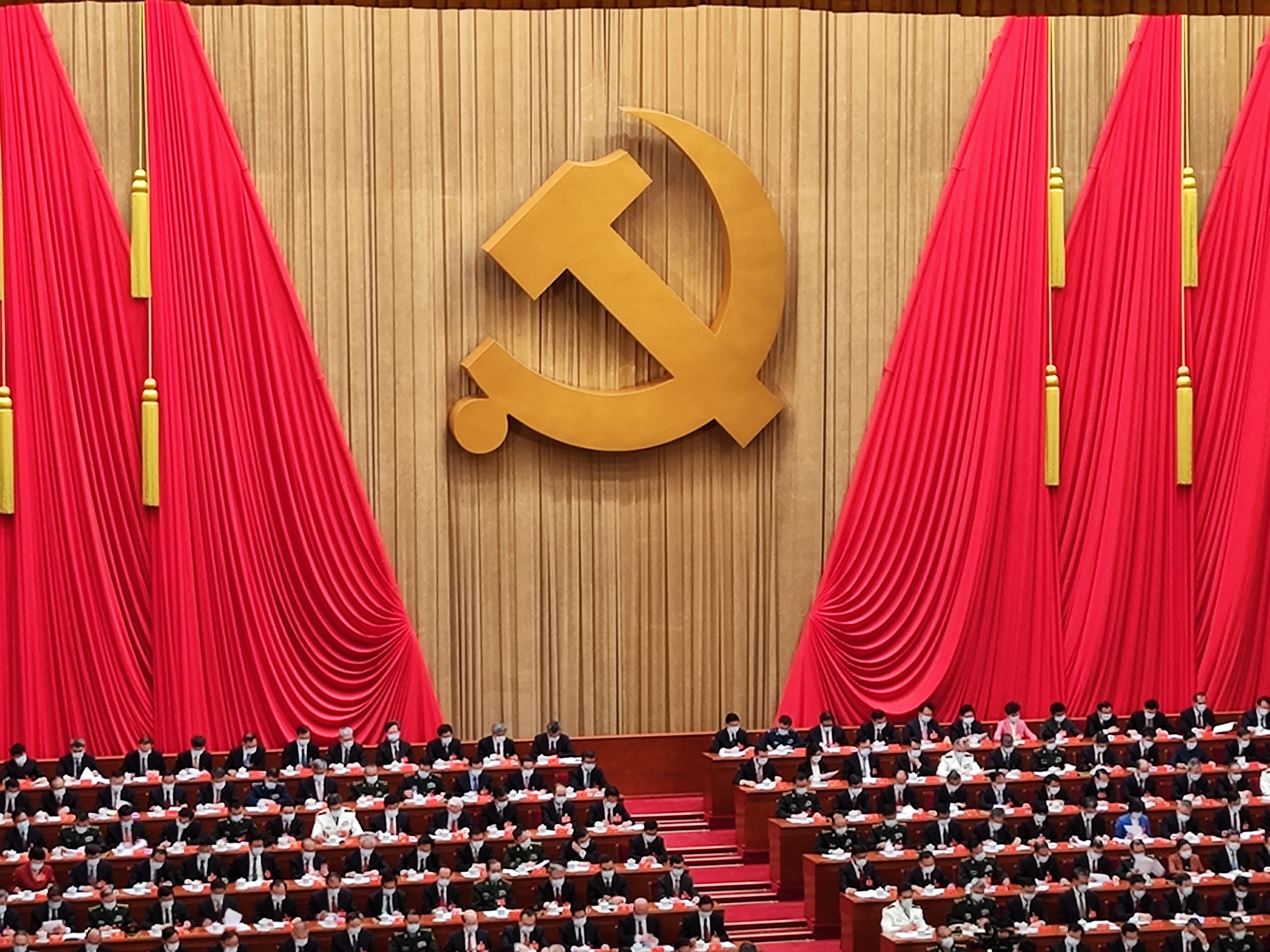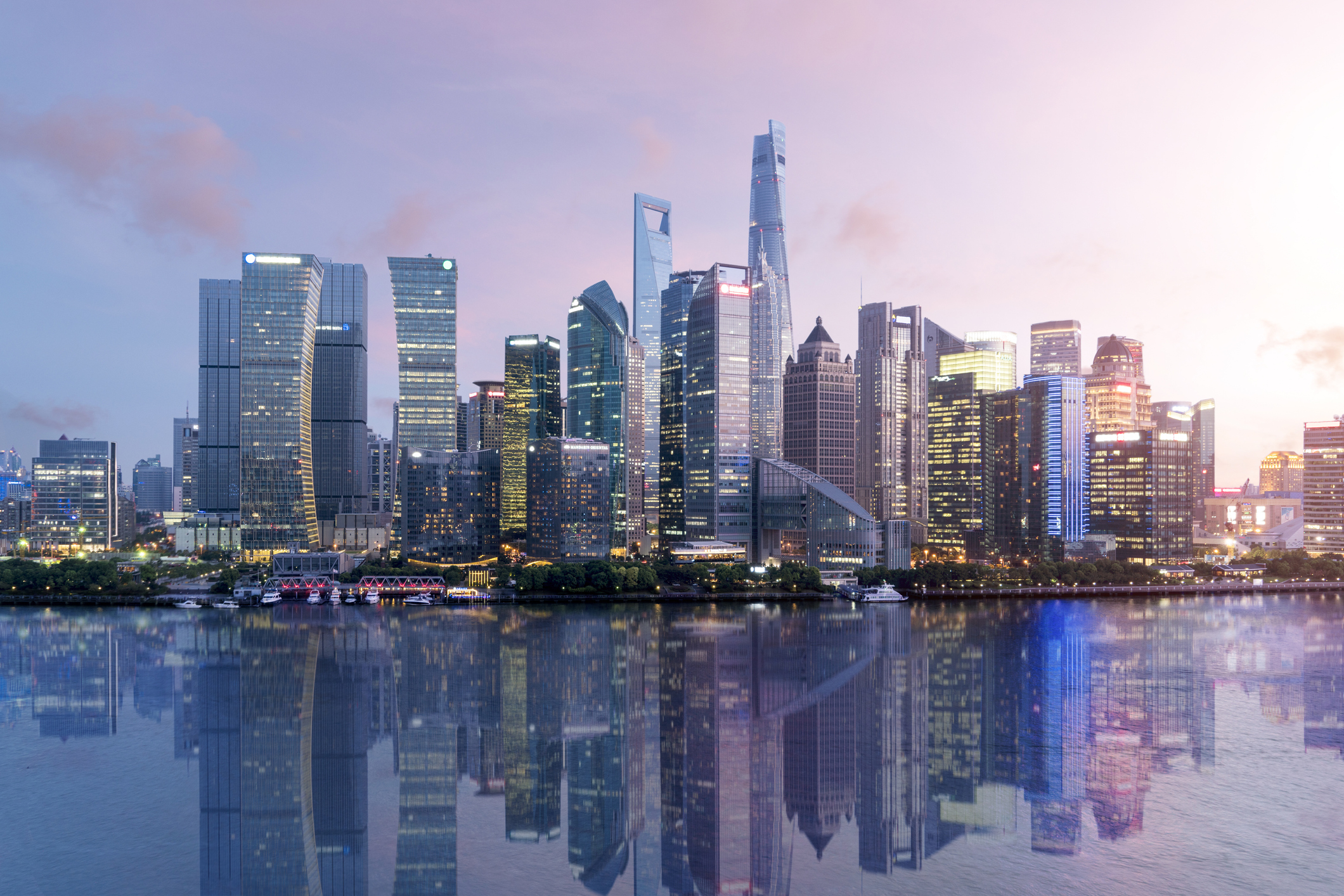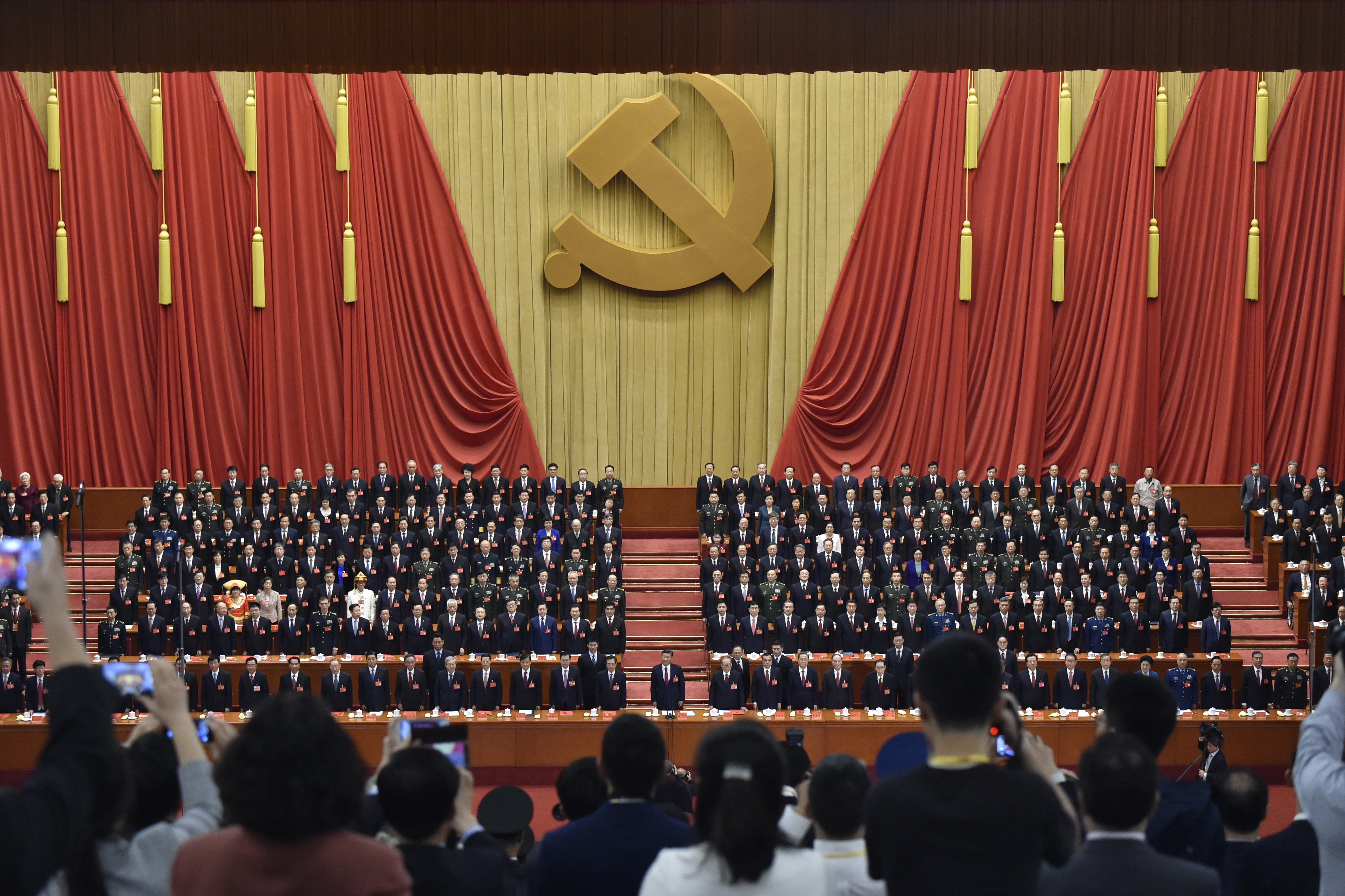
Beijing confronts an increasingly distrustful world, as the Chinese economy slows down from coronavirus-induced disruptions to the global supply chain. In an article originally published in Japan Spotlight, Ke Long calls for industrialized and emerging countries to work together to rebuild the global economy.
* * *
According to the Chinese State Statistical Bureau, China’s real GDP growth rate slowed to −6.8% in the first quarter of 2020, the lowest level in the past three decades. Although it does not mean an economic crisis for China, the coronavirus outbreak has damaged the economy and caused it to slow down. But it will not take a long time to bring the virus under control. The impact of the Covid-19 pandemic will be felt not only in China but throughout the whole world. Fortunately, the Chinese government locked down Wuhan city and Hubei Province on Jan. 23, 2020, and then almost all cities in China were locked down till the end of January. But distribution in the country was stopped and the supply chain of the manufacturing industries was broken as well. Chinese society fell into a panic at the same time.
The coronavirus crisis is completely different from any previous economic crisis. The Covid-19 contagion has damaged the global supply chain and value chains in the manufacturing and service industries. It is said that the modern global supply chain was created originally under the “Just-in-Time” concept of Toyota Motors, in which manufacturers try to hold fewer parts and components in stock. The key issue for the world economy now is how to rebuild an efficient and stable supply chain.
It is difficult to see that any country can achieve an economic renaissance independently, because the world has been globalized economically. The interdependence of the world economy had deepened in the past three decades. The way in which the global economy can advance to a new phase of development is for nations to cooperate with each other to overcome the coronavirus contagion, and then to rebuild the global supply chain and value chains. China has played an important role as a global manufacturing center in the past two decades. As multinational companies work to rebuild their supply chains from now on, it is thought that some of them will move their factories from China to other emerging countries, such as the ASEAN members and India. But such removals will not damage the Chinese economy seriously; they could improve China’s efforts to become a global marketplace instead of a global manufacturing center. China has been the biggest car market and biggest beer market. Its GDP per capita reached $10,000 in 2019. China is not a developing country now; it has become a middle-income country.
Foreign direct investment has been one of the main driving forces of Chinese economic development. Thousands of foreign companies have been attracted to invest in China because labor costs were lower than in other emerging countries. A cheap and well-educated labor force gave China a competitive edge as a global manufacturing center. Since 40 years ago, over 200 million farmers have left the countryside for the cities, especially cities in coastal areas, and taken up work in factories, such as in Shenzhen, Dongguan in Guangdong Province, and Wenzhou in Zhejiang Province. But in the past two decades labor costs have increased rapidly. Nowadays labor costs in Chinese coastal areas are higher than in ASEAN countries and India. This is a signal from the market, requesting China to improve development of high-end industries including information technology and electronics. In other words, it is impossible for China to sustain economic development just by relying on cheap labor.
Over the past two years a US-China trade war has been underway. This trade war came about not only because of President Donald Trump’s focus on the imbalance in US trade with China, but also because of intellectual property infringements by China. For the United States, another problem, which may be more important, is hegemony in high technology development. The trade war has obviously damaged the Chinese economy partially, as exports are one of the most important driving forces sustaining China’s economic development. But it could also force China to do more to change its economic development model by strengthening domestic demand, not simply relying on exports. Fortunately, China and the US reached a “phase one” agreement on negotiations for a bilateral trade rebalance. The administration of President Xi Jinping promised to buy more American products and foods, and the Chinese government seemed optimistic about economic development in 2020 because it believed the Trump administration would not refuse to develop trade with its biggest economic partner, China. But then the unforeseen coronavirus emerged, damaging Chinese society and the economy.
Chinese Economy’s Record-Low Development
The −6.8% real GDP growth rate for the first quarter of 2020 announced by the Chinese government was considered better than the estimated level. The biggest city in central China, Wuhan, the center of the coronavirus contagion, was locked down on Jan. 23 and the people were forced to stay at home. The shops were closed and distribution systems were stopped. At that time nobody knew what would happen tomorrow. As a result, Chinese society fell into a state of panic and lost control, lost its humanity, lost its morality. In some typical cases, people in other cities tried to block the homes of their neighbors if they had just come back from Wuhan or Hubei Province.
Some economists have described the fight against the coronavirus as the third world war, only this time with an invisible enemy, completely different from traditional war. The virus has damaged the whole world socially and economically. This is a minus sum game, which means that nobody can gain any benefit in this war. In the decades since the 1990s the world economy has become globalized, and globalization has contributed to technology innovation dramatically. China is one country which has benefited from globalization during these past decades.
The Chinese government ended its centralized socialist planning economy in 1978. China then started its open-door policy to reform the economic system, although this was enforced gradually. As a result, the Chinese economy grew over 10% annually on average between 1978 and 2010 (Chart). It has been described as a miraculous development, faster than other developing countries and industrialized countries. When the Xi administration started in 2013 Chinese economic development had slowed from 9% to 7%, and Xi understood it was meaningless to realize a growth rate of 9% or higher through improving fiscal infrastructure investment. Premier Li Keqiang has called economic growth of about 7% the “new normal”, but the problem for China is how to maintain the growth rate at this level, as the economy has been slowing down continuously since then.
Chinese real GDP growth rate
(previous year=100)
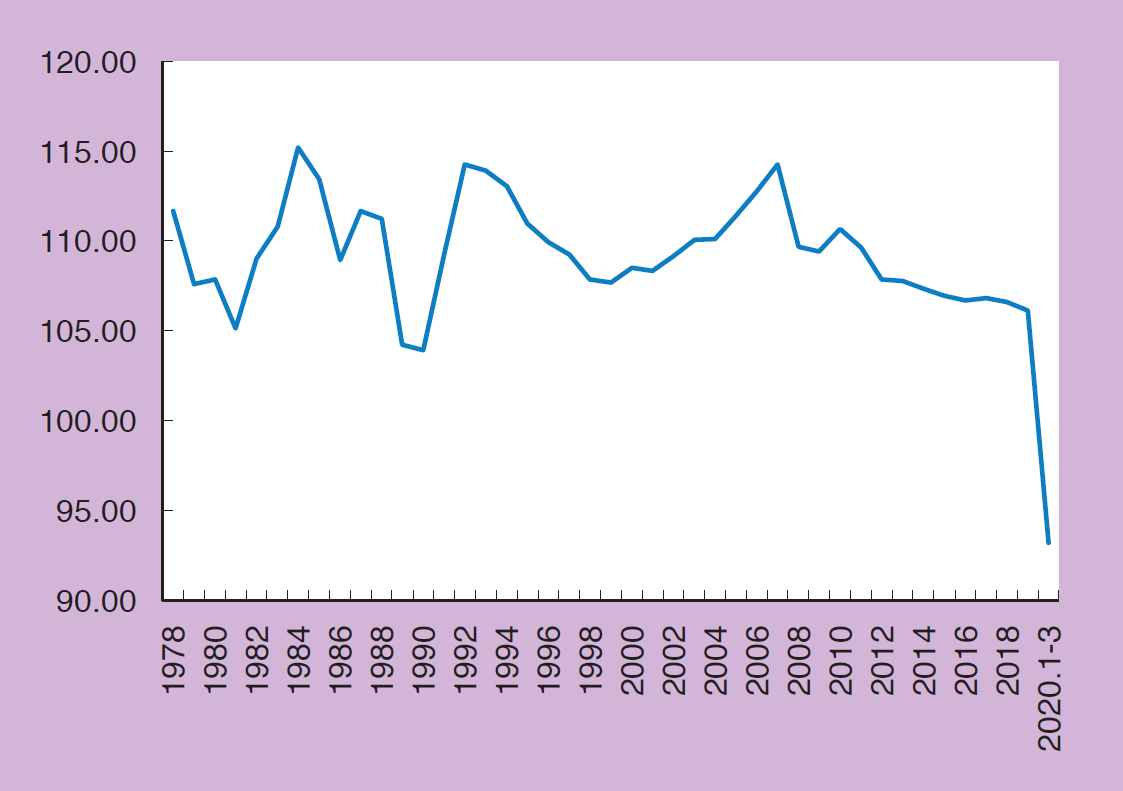
Meanwhile, Xi has promised to eradicate poverty, but if the economic growth rate slows down to below 6% it not only means missing the goal of poverty reduction, but also that the unemployment problem will damage social stability. These factors could be exacerbated by the continuing trade war with the US, which has already persuaded some transnational companies to move their factories from China to other developing countries.
Made in China 2025 & 1000 Talents Plan
The relationship between the US and China is undoubtedly the most significant driver of global economic development. Thousands of American companies have invested in China over the past decades, moving their factories there from the US, Mexico, ASEAN and other emerging countries. Of course, this is a win-win game for the US and China. China was a country facing a shortage of foreign currency and technologies in the 1980s and 1990s. It attracted foreign companies to invest in it directly, and they brought their technology to China and helped it gain huge amounts of foreign currency. The Chinese central bank holds foreign currency reserves of over $3 trillion, the largest in the world. The exports of foreign companies invested in China contributed to increasing these currency reserves.
For China it is necessary to maintain a stable relationship with the US in order to realize a trade surplus with it. That surplus increased from $81.9 billion in 2000 to $419 billion in 2018. This huge increase in the trade imbalance is one of the reasons behind the trade war. In the previous decades China had traditionally tried to buy more American goods and products to rebalance trade, but this was insufficient given the imbalance in industrial structures. It would clearly be impossible for Washington to ask American companies to move their factories back to the US, as it would not be an attractive manufacturing center for traditional industries.
The real problem for the two nations is one of trust. In the previous decades the US employed an engagement strategy to integrate China into the global community and asked it to work together under global rules. China promised to open its doors to the world when it entered the WTO, and also protect intellectual property (IP) rights. But the open-door policy of China has clearly been not enough. Infringements of IP rights in China have been reported continuously, and it is even more serious that Beijing seems not to be protecting IP. On the contrary, the Chinese government has actively encouraged state-owned enterprises to violate the IP rights of foreign companies.
Meanwhile, the Xi administration has started several strategic projects, including Made in China 2025 and the Thousand Talents Plan (TTP). The Made in China 2025 initiative, which sets out to modernize China’s industrial capability, began in 2015. This project focuses on 10 strategic industrial sectors, such as new information technology, aerospace equipment, new materials, and new energy development technology, in which China aims to develop cutting-edge technology. The Chinese government is seeking to end its reliance on foreign technology and upgrade its own industrial capability. China wants to accumulate IP for itself by accessing foreign IP.
An earlier national project, the TTP, was established by the government in 2008. The plan aims to recruit leading scientists in order to improve innovation and upgrade industrial capability—not only Chinese scientists working for foreign universities or companies but also foreign scientists who could work in China, whether full time or part-time.
Such kind of national development strategies should not, in origin, be a threat to any other foreign country. But the problem is that Chinese companies infringe foreign IP rights, possibly under the Made in China 2025 initiative, and some cases of TTP recruiting scientists from foreign universities, companies and laboratories have been illegal. The G7 industrialized nations have recognized the plan as a threat to the global community, and this is also one of the backgrounds of the US-China trade war.
Prisoner’s Dilemma for US & China
Most people hope that the US and China can stop their trade war and work together as soon as possible. The problem is that many American politicians and economists believe that a policy of engagement doesn’t work with China. Furthermore, the relationship of trust between the two countries has been broken in the past decade.
China is certainly not a democratic country. There is no freedom of speech for Chinese people, because human rights are not protected by the rule of law. For most American people, freedom of speech is a basic human right that must be protected. It is impossible for most Americans to work together with a country like China. Of course, most American companies do not particularly care about freedom of speech; they simply want to maximize their return on investment. But some entities, such as Google, Facebook and most American newspapers, are not allowed to do business in China, while their Chinese business competitors like Baidu, Sina, Tencent and Chinese official media are allowed to do business in America freely. For American people, China is recognized as an unfair competitor.
At the start of the trade war, Xi stressed that China must retaliate for the tariffs imposed against it by Trump. From the American viewpoint, it is difficult to understand why Xi decided to retaliate instead of cooperating. The trade war is not the fault of the US but of wrong Chinese policies which are challenging the global community. China needs to reform its economic and political systems instead of retaliating.
The Chinese view, on the other hand, is that the trade war was started by Trump, who changed US policy toward China. Although the imbalance in the two countries trade is increasing rapidly, it also means big benefits for the US. First, a large part of Chinese exports to the US comes from American companies in China; and secondly, China helps the US keep inflation down, because the low-income class in the US can pay little to buy high-quality goods made in China. This is a plus sum win-win game.
Why is it that some rich and low-income Americans seem to have changed their attitude to China? One possibility is that some of them believe that Chinese workers made them lose their jobs, because many American companies moved their factories to China. This is true, but for Washington to push these companies to move their factories from China back to the US would not be a solution. It would be impossible, because labor costs are much more expensive than in China. The per capita GDP of the US in 2018 reached $62,794—over six times that in China in 2019.
The fundamental issue is not about economic benefits; it is that the two countries cannot trust each other because of different cultures and values. The two countries are facing a traditional prisoner’s dilemma of whether to remain silent about their crime (Table).
The Prisoner’s Dilemma for the US & China

Source: “The Basics of Game Theory and Associated Games” (2014) by Nicholas Milovsky.
(1) If prisoner A and B betray each other, both of them serve 2 years.
(2) If A betrays B, but B remains silent, A will go free, and B serves 3 years.
(3) If A remains silent, but B betrays A, A serves 3 years and B will go free.
(4) If A and B both remain silent, both of them serve 1 year in prison.
It is clearly the best choice for both A and B to remain silent, but realistically A and B are going to betray each other. This is also a dilemma for the US and China. The best choice for both countries is to cooperate with each other, but they do not trust each other. So they both decide to retaliate. That will mean a big risk for the global economy and global politics.
The Role of International Organizations
One of the presumed merits of globalization is in allocating resources efficiently. Complementary industrial structures can be mutually supportive, and under globalization the world can more easily share information. Important roles in this regard are played by international organizations. At the top of the pyramid is the United Nations, which came into being after World War II. But the international situation changed 30 years ago when the Cold War ended. Since then emerging economies such as China, Russia, India and Brazil have been playing a more important role. The G7 industrialized countries are still the global leaders, but the role of the G7 has weakened during the past three decades. Emerging countries want global rules to be more flexible and in their favor. But arguments about how to reform international organizations have not been resolved. Bargaining between developed countries and developing countries is still under way.
Trump has shown his disapproval of some international organizations, such as the WTO, the World Health Organization (WHO), and even the UN itself. It is necessary to reform current international organizations, but the problem is how to do so. The key point is how to create new and more efficient organizations, but the importance of governance cannot be stressed enough, otherwise these bodies will not work fairly and efficiently. When we argue about governance, we must have a clear idea of who is governing. Transparency must be guaranteed systematically. The truth is that most international organizations are clearly sick in some way and too big, like someone with metabolic syndrome.
Look at the role and function of the WHO. This organization is expected to play a role in protecting people’s health and stopping the spread of viruses and diseases. As an international body, the WHO has an obligation to warn about the risks of viruses and diseases, but the coronavirus crisis has shown that it does not function very clearly. When the US and Japan decided to limit the number of foreign travelers visiting after Wuhan locked down, the WHO said it was an over-reaction. This attitude did nothing to stop the coronavirus contagion. If we want to maintain globalization, we must recreate more efficient and better functioning international organizations.
Conclusion
The global economy is undoubtedly undergoing its most serious crisis since World War II. It is vital for the world to work together, firstly to control the virus contagion. Secondly, the global economy needs to be rebuilt, with industrialized countries and emerging countries working together, especially to rebuild a more stable global supply chain and value chains. Thirdly, international organizations need to be reformed and fairer rules on their governance established.
A trade war is not constructive either for emerging economies or developed countries. International trade rules need to be standardized, including on IP protection. The WTO should play a more positive role in solving these problems.
The function of risk management must also be strengthened. The new global system must be more efficient to equalize incomes domestically and globally, and to realize this constructive dialogue between developed and developing countries must be improved.
Although the coronavirus crisis is expected to be over before long, the virus itself will not disappear, according to the WHO. Human beings themselves will need to learn how to become more civilized. The coronavirus crisis may prove to be a significant turning point in our lives.
Finally, the Chinese National People’s Congress was held in Beijing on May 22–28, 2020. Premier Li Keqiang did not set any numerical economic growth rate target in the government report. The reason could be uncertainties about the economy. But he emphasized 39 times the need to stabilize the employment situation. The biggest concern for the government is the unemployment problem, as it could destabilize society. It is important for the Xi administration to stabilize society; otherwise the administration may not be sustainable. To realize that goal, the Chinese government needs to do more to work together with the global community.
Reprinted with permission from the July-August 2020 issue of Economy, Culture & History JAPAN SPOTLIGHT Bimonthly, published by the Japan Economic Foundation.

